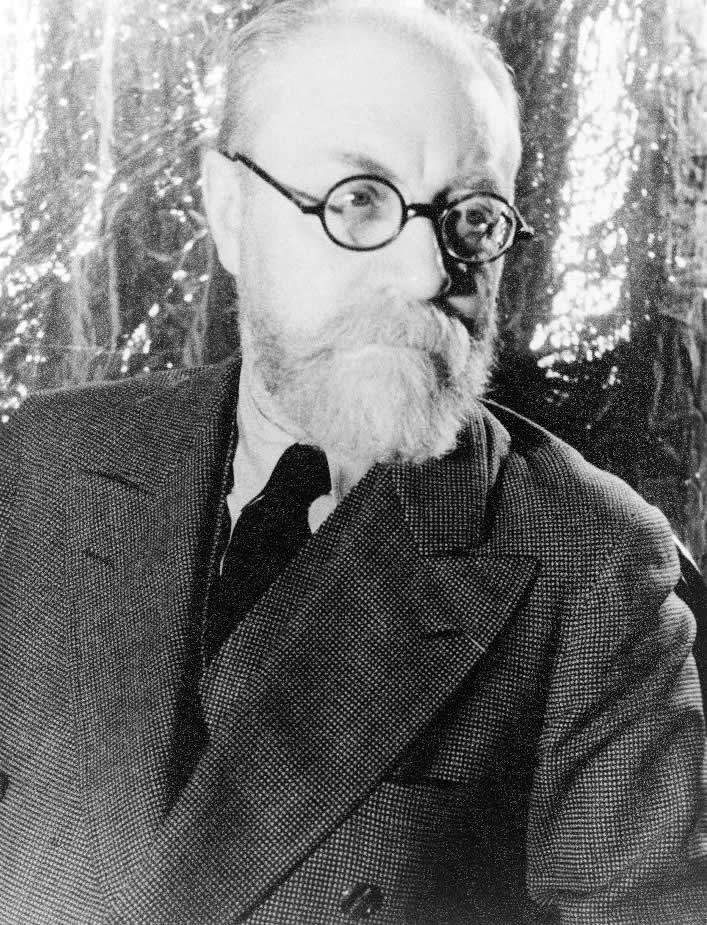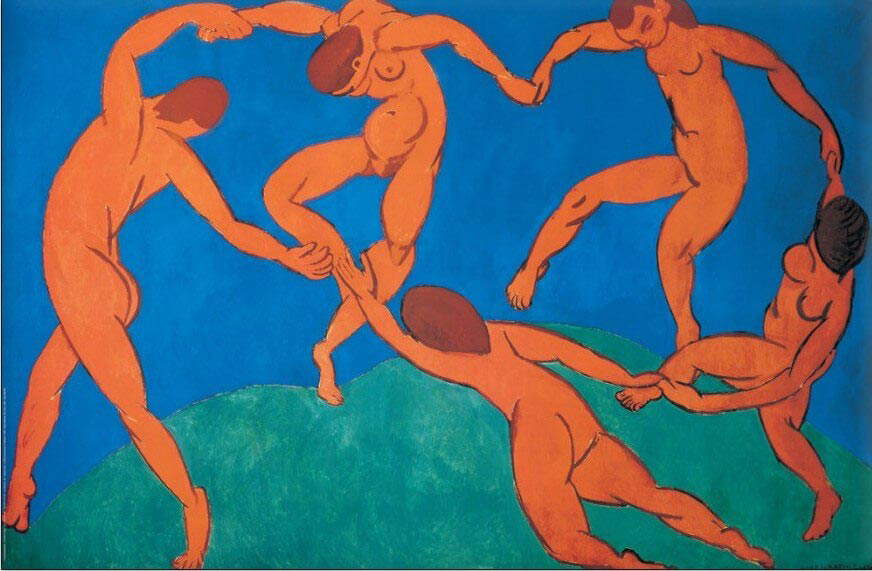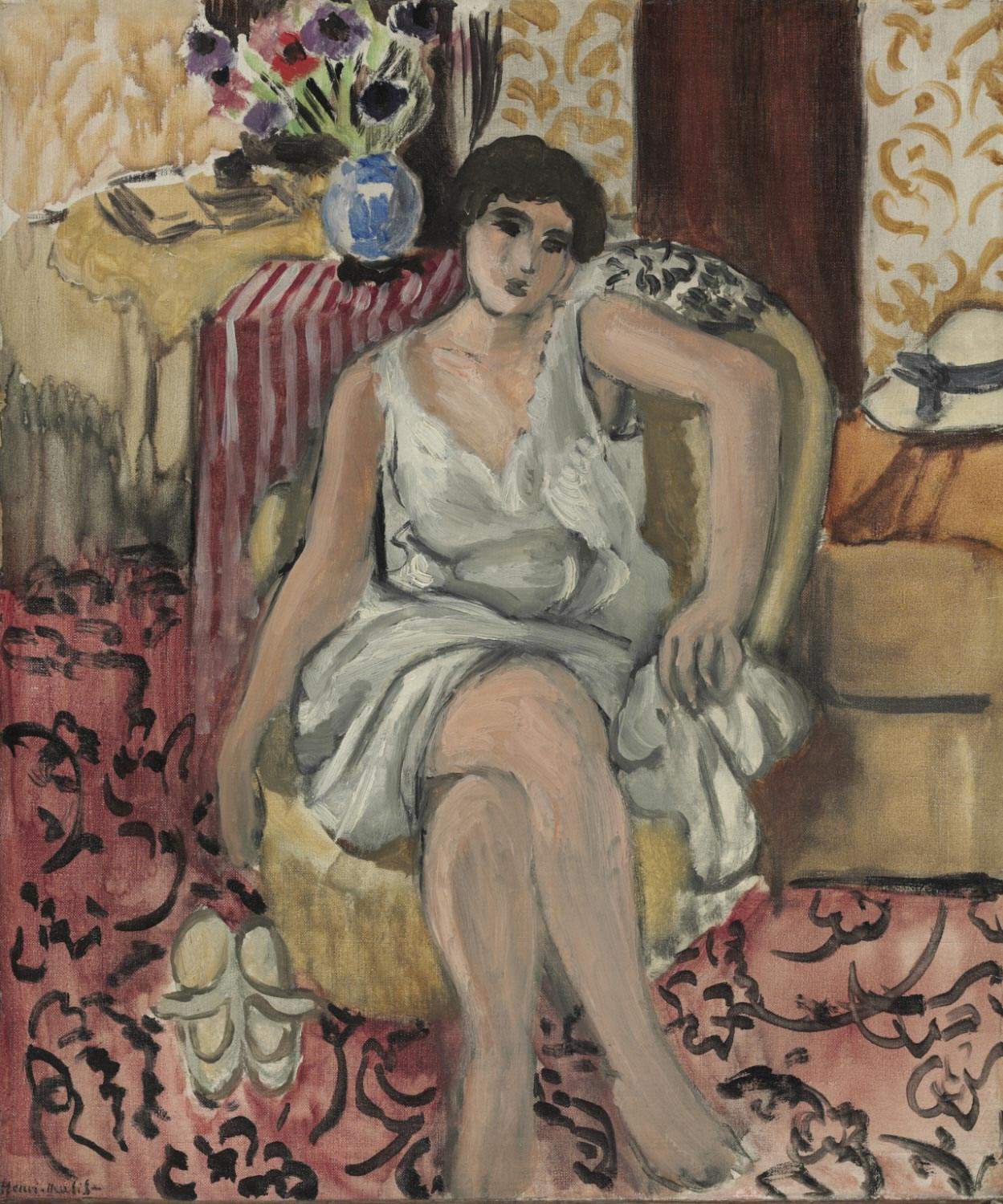The experience of Henri Matisse (Le Cateau-Cambrésis, 1869 - Nice, 1954) was fundamental to developments in twentieth-century art, and it begins in that phase of economic revival that accompanied the second industrial revolution. In art history, philosophy, and literature, however, this moment of technological progress, wealth, and well-being is received negatively, turning into an ideological crisis. Different artistic languages, currents of thought in opposition to the nineteenth-century positivist model, and a common sense of unease with society spread. Artists do not feel understood by their own time: the period of the Avant-Garde, the protagonist of the early twentieth century, is born. The term refers to those "patrols" of innovators who intuit new perspectives of artistic vision and development, untethered from the classical forms of art of the past. Indeed, the various movements, groups or currents are united by experimentation with new languages, abandoning ties with tradition. Artistic research, in the French sphere, is mainly oriented on two fronts, both opened by the solutions of PaulCézanne (Aix-en-Provence, 1839 - 1906): one line aimed at the search for a new space, from which Cubism would later take its cue; the other interested in the effects of color, at the center of the Fauves group, a movement to which Matisse belongs. Cubism, born in 1906-07, is a movement committed to the decomposition of planes through strict geometrism and consists of three phases. A first moment, between 1907 and 1909; a second phase, called analytic, between 1909 and 1911; and finally synthetic cubism, from 1912-13, within which the use of color to construct the subject is recovered. Matisse, as mentioned, joined the Fauves group, a very brief experience, lasting from 1905 to 1907, but one that united a number of artists from different backgrounds, united by the use of color as the founding compositional element of their works. Matisse was to become the most important and complex figure in the movement.
The Fauves abolished preparatory drawing to work directly on canvas, juxtaposing pure colors, moving in the wake of the research initiated by Cézanne, Gauguin and Van Gogh in the second half of the 19th century. Parallel to the Fauves, the Expressionists in Germany were also interested in color; unlike the French, the Germans charged their canvases with a tragic, anguished sense, relating to an unhappy existence, with aggressive, violent brushstrokes, exasperating their mood. Their shared interest in color, the founding matrix of their compositions, often leads one to consider the Fauves as the corresponding expressionist current in France. If studied only through the works of Maurice de Vlaminck (Paris, 1876 - Rueil-la-Gadelière, 1958), one of the most important exponents of Fauvism, the Fauves movement would turn out to be much closer to Expressionist than to French research. Vlaminck works with an exaggerated, anguished line, unlike the other members of the group, whose origins lie in the symbolism of Gustave Moreau but also in the anti-naturalism of Cézanne’s The Bathers. They do not aim to depict subjects close to reality, but the intent is to create original color contrasts, far-fetched, but in harmony with space. In addition to Matisse, they were joined by André Derain (Chatou, 1880 - 1954, Garches), Raoul Dufy (Le Havre, 1877 - 1953, Forcalquier) and Georges Braque (Argenteuil, 1882 - 1963, Paris).
The name fauves, which translated into Italian means “belves” or “savages” (because of their use, considered violent, of color), was assigned by critic Louis Vauxcelles following their first exhibition at the Salon d’Automne in 1905: the Salon was founded in 1903, to allow modern artists to exhibit freely, was born as a consequence of the conservatism of the academic environment, which was considered insensitive to novelty.
 |
| Henri Matisse, photograph from 1933 |
Henri Matisse was born on December 31, 1869 in Le Cateau-Cambrésis, northern France, the son of agricultural merchant parents. He moved to Paris in 1887 to study law, becoming a civil servant shortly thereafter. An attack of appendicitis “enlightened” the artist, who in 1890 took up painting for the first time, intending to be a professional artist. In 1991 he studied at theAcadémie Julian, a French school of painting and sculpture founded in 1867. There he came in contact with many artists, such as the Symbolist Gustave Moreau, who became his teacher; a fundamental lesson for Henri and his research in later years, especially in his early adherence to the Fauves. In the last years of the century, Matisse met the little-known painter John Peter Russell, but he introduced Henri to the Impressionists and three independent artists, such as Cézanne, Gauguin, and Van Gogh. It was by looking at the works of the latter that Matisse changed his way of painting; a new style, which resulted in what would become the Fauves’ quest. During the same years, he would have three children: Marguerite with French model Caroline Joblau, who would not, however, become his wife; the other two, Jean and Pierre, from his marriage to Amélie Noelie Parayre. His acquaintance with Spanish artist Pablo Picasso, whom he met perhaps in 1904, was crucial for Matisse: the two remained close all their lives, influencing each other, although there was no lack of competition between them. Having met in the home of Gertrude Stein, a great supporter of Matisse’s and Picasso’s art, they established an unbreakable bond from then on. Picasso himself, after Matisse’s death in 1954, fell into depression, isolating himself in his studio.
From 1906 to 1908, Henri joined the Fauves group with the work Joy of Living, painted between 1905 and 1906. This is the caesura moment in his poetics, between his training and early artistic maturity. In the same year, he exhibited at the Salon d’Automne with the Fauves, as mentioned above, but the experience soon ended. Matisse, also in the same years, frequents “l’alveare” in Montparnasse, a building used as a workshop for artists, working together with a wide variety of personalities. His career is also marked by the writing of a number of artistic texts, the first of which is Notes d’un peintre of 1908 (“Notes of a Painter”), an exhaustive writing on his poetics, an indispensable testimony for posterity. His meeting with the Russian merchant, Sergei Šukin, is instrumental in the commission of two works, The Dance and The Music, of which the artist produced two versions (the second is from 1910). The Académie Matisse, in which the artist worked from 1911 to 1917, was founded, on the initiative of his friends, as a school to teach young painters. In 1917 he moved to the French Riviera, to Cimiez, where he changed his way of painting, perhaps traceable to a "return to order" after World War I, a moment also present in the art of his friend Picasso. Matisse also accepted a number of theatrical commissions: for example, in 1919 he curated sets and costumes for The Nightingale’s Song, which was repeated in 1939.
In 1930 he made several trips, between Italy, Germany, France, and England; he also went to the United States, where he obtained a commission for The Dance II from the American Albert Barnes, finished in 1932. A few years later, he divorces his wife and in 1939-40 discovers he has cancer. He survives, but spends the last fifteen years of his life in a wheelchair. Given the difficulties in painting, from this time he began to take an interest in graphic art, particularly through the use of collages (a technique certainly seen by his friend Picasso, perhaps the first to use it), which occupied the latter part of his artistic activity. The book Jazz, published in 1947, is one of the most interesting writings to come out in the twentieth century, printed in only 250 copies: today the originals have a very high market value. In his later years he was also an illustrator of some of James Joyce’s novels. In the last years of his life he devoted himself to a commission, the chapel for the Dominican monastery, dedicated to the Virgin of the Rosary. On November 3, 1954, he died in Nice, where he is buried and remembered today.
 |
| Henri Matisse, Joy of Living (1905-06; oil on canvas, 174x238 cm; Merion, Barnes Foundation) |
 |
| Henri Matisse, The Dance (1909-10; oil on canvas, 260x361 cm; St. Petersburg, Hermitage) |
Matisse’s art is not always understood: his first exhibition, in 1904, was not a success. At the time there was much criticism leveled against him and avant-garde artists in general. In his paper Notes d’un peintre, Matisse responds to the negative opinions, which arose following the 1905 exhibition at the Salon d’Automne. The criticism continued when French art landed in America in 1913 at the First International Exhibition of Modern Art in America. Matisse’s work Blue Nude is accused of “smug cockiness” for its precisely swaggering stance. With theArmory Show comes a reassessment of European art, indeed taken as a model. Art critic Brian O’Doherty describes Matisse in his book Inside the white cube as one who “... understood better than anyone else the dilemma of the pictorial plane and the tropism that drove it to extend outward.” Indeed, the artist perceived in the pictorial space a limitation, represented by the frame, which he promptly eliminated. “My dominant colors, instead of being supported and enhanced by contrasts, were actually devoured by contrasts...this convinced me to paint in flat colors: this was Fauvism,” Matisse wrote in 1905.
Matisse’s new poetics, described by his words, is inaugurated with Joy of Living, where the artist draws on the theme of Cézanne’s Bathers. The figures depicted are painted in relaxed poses, as if the artist had immortalized them in a dimension of well-being, joy, where everyone embraces and unites. His painting is characterized by homogeneous colors that have no shadow or depth. Matisse’s is an opposite vision to that of the Cubists: rational the latter, striving for emotion and vitalistic intensity Matisse’s painting. But it is also far from German expressionism, anguished and tragic: Matisse’s, on the contrary, is full of joy.
In 1909, Russian patron Sergey Šukin, commissioned the Frenchman to paint The Dance andLamusica, works in which he brought to fruition the studies on color begun in the Fauves experience. Using only three colors, green for the grass, blue for the sky and red for the bodies, Matisse creates a space devoid of depth, where it is no longer the painting that responds to the actual representation, but rather the opposite. The figures are at the service of the artist’s brushstrokes, enveloped in a vital atmosphere, mindful of the Joy of Living. Also in the same years, he made The Red Room (Harmony in Red), a singular painting that combines as many as four different genres (still life, figure, landscape and interior), where the search for two-dimensionality is even more evident , achieving increasingly abstract figures, and opposing realistic depiction with a strong sense of decoration. It is a strong simplification that is routed on the path of abstraction (“I do not paint things but only the relationships that connect them,” the painter had to write). In his art, the French artist also opens up to the influences ofAfrican art, taking up precisely the simplification of the human figure and the reduction of the color range toward warm tones.
In the works produced in Cimiez, however, he engages in new research: no longer able to paint with ease, he is forced to invent another way of making art. The artist thus turns to the creation of gouaches découpées, where the artist assembles figures previously made on paper. One example is Polynesia, the sky, in memory of a three-month trip to Tahiti. Other activities Matisse devoted himself to are ceramics, tapestry making and finally the commission for the Rosary Chapel in Vence. As 1948 dawned, the artist also turned out to be an excellent architect, designing a structure perfectly connected with the surrounding building, designing the stained glass windows, in harmony with the furnishings: a worthy conclusion to his artistic parabola.
 |
| Henri Matisse, The Music (1910; oil on canvas, 260x389 cm; St. Petersburg, Hermitage) |
 |
| Henri Matisse, The Red Room (1908; oil on canvas, 180.5 x 221 cm; St. Petersburg, Hermitage) |
 |
| Henri Matisse, Woman Seated in Armchair (1920; oil on canvas, 46.4 x 39.4 cm; Philadelphia, Philadelphia Museum of Art) |
In Italy, it is possible to view some of his works in Lombardy, particularly at the Museo del Novecento in Milan, a container of Italian and European experiences of the 20th-century art scene. In Varese, in the Museo Baroffio del Sacro Monte, it is possible to see works by Matisse, alongside those of Guttuso, Sironi, as well as those of the French Buffet and Roualt. The Fondazione Cassa di Risparmio di Volterra, has drawings and engravings by Matisse, Morandi, Campigli and some paintings by Guttuso and Sassu. Also in Italy, the Pinacoteca di Giovanni e Marella Agnelli in Turin houses no less than seven works by the artist, created in the 1920s and 1940s (reaching almost to the 1950s, with Branche de prunier, fond vert from 1948). The Galleria d’arte Moderna in Venice also holds works by Matisse.
Many of his works can be seen in France, at the Musée National d’Art Moderne Centre Pompidou in Paris, the Musée d’Orsay, and again at the Musée Matisse in Nice. There are two versions of the work The Dance : the one from 1910 is kept at the Hermitage in St. Petersburg, the other, from 1909, at the Museum of Modern Art in New York. Also preserved at the Hermitage are The Red Room and The Music.
There are also many of his works in the United States of America: those commissioned by Gertrude Stein are now at the Museum of Art in Baltimore. The Joy of Living is preserved in the Barnes Foundation, Pennsylvania. Also on U.S. soil we find two important works such as Woman with Hat, at the Museum of Modern Art in San Francisco, and Blue Nude, at the Baltimore Museum of Art.
 |
| Henri Matisse, life and works of the great exponent of the Fauves |
Warning: the translation into English of the original Italian article was created using automatic tools. We undertake to review all articles, but we do not guarantee the total absence of inaccuracies in the translation due to the program. You can find the original by clicking on the ITA button. If you find any mistake,please contact us.